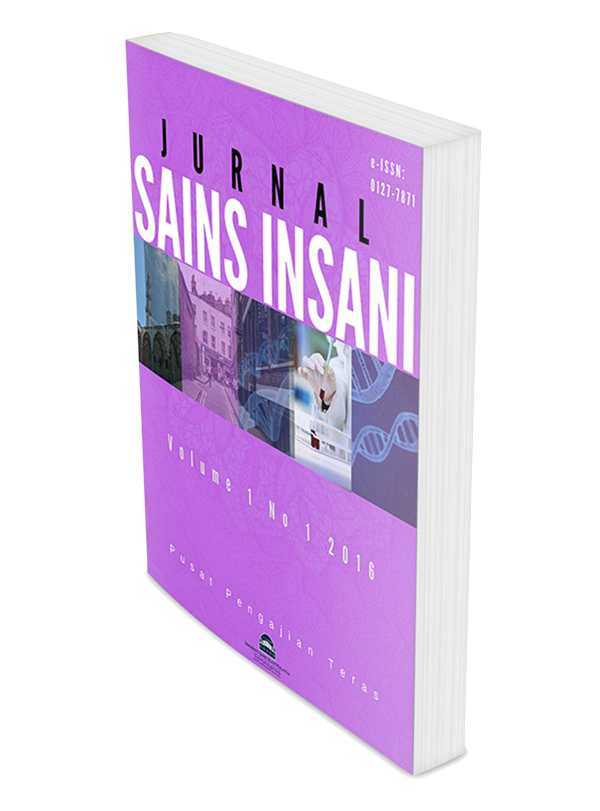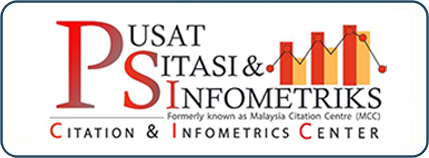The Correlation between Aggression, Self-esteem and Cyberbullying among Undergraduates in Malaysia
Hubungan Antara Agresi, Harga-diri dan Perbuatan Buli Siber dalam Kalangan Pelajar Sarjana Muda di Malaysia
DOI:
https://doi.org/10.33102/sainsinsani.vol5no1.189Keywords:
proactive aggression, reactive aggression, self-esteem, cyberbullying, cyberbullying perpetration, proactive aggression, reactive aggression, self-esteem, cyberbullying, cyberbullying perpetrationAbstract
The prevalence of cyberbullying cases has been increasing over the years and it causes detrimental effects on one's mental health and psychological well-being. This cross-sectional research aims to determine the significant relationship between proactive aggression, reactive aggression and self-esteem on cyberbullying among undergraduates in Malaysia. 255 participants were recruited through purposive sampling. Questionnaires were distributed online via social media platforms such as Facebook, Instagram, WhatsApp, and Twitter. Three validated and reliable self-report measures were used to gather responses for this including Reactive-Proactive Aggression Questionnaire (RPQ), Rosenberg Self-esteem Scale (RSES) and Cyberbullying Test (CT). RPQ consists of 23 items followed by RSES with 10 items and lastly, CT consists of 45 items. All measures yielded a high reliability ranging from .84 to .95. The present study has found that proactive and reactive aggressions have a significant positive relationship with cyberbullying perpetration. However, proactive aggression has a stronger relationship as compared to reactive ones. Those with high proactive aggressions tend to involve more in cyberbullying as compared to reactive aggression. Moreover, it also found a negative but non-significant relationship between self-esteem and cyberbullying perpetration among undergraduates in Malaysia. It shows that those with high self-esteem tend to be cyberbullying victims but not perpetrators due to their frequent usage of social media. This study implies that it could be useful to tackle those involved in proactive aggressions as compared to reactive aggression and those with high self-esteem. Healthy ways to channel proactive aggression in which perpetrator seeks reward or dominance should be identified rather than focusing on those who reacts aggressively to a threat or provocation.
Downloads
References
Adebayo, D. O., Ninggal, M. T., &Ajiboye, S. K. (2019). Frequent social media use as predictor of cyberbullying among university undergraduates in Kwara State, Nigeria. Education, Sustainability & Society (ESS),2(2), 17-21.https://doi.org/10.26480/ess.02.2019.17.21
Anderson, C. A., & Bushman, B. J. (2002). Human aggression. Annual Review of Psychology, 53(1), 27–51. https://doi.org/10.1146/annurev.psych.53.100901.135231
Ang, R. P., Huan, V. S., & Florell, D. (2014). Understanding the relationship between proactive and reactive aggression, and cyberbullying across United States and Singapore adolescent samples. Journal of Interpersonal Violence, 29(1), 237-254. https://doi.org/10.1177/0886260513505149
Balakrishnan, V. (2018). Actions, emotional reactions and cyberbullying –From the lens of bullies, victims, bully-victims and bystanders among Malaysian young adults. Telematics and Informatics, 35(5), 1190-1200. https://doi.org/10.1016/j.tele.2018.02.002
Balakrishnan, V., & Fernandez, T. (2018). Self-esteem, empathy and their impacts on cyberbullying among young adults. Telematics and Informatics, 35(7), 2028-2037. https://doi.org/10.1016/j.tele.2018.07.006
Bayraktar, F., Machackova, H., Dedkova, L., Cerna, A., & Ševčíková, A. (2015). Cyberbullying: The discriminant factors among cyberbullies, cybervictims, and cyberbully-victims in a Czech adolescent sample. Journal of Interpersonal Violence,30(18), 3192-3216. https://doi.org/10.1177/0886260514555006
Bernama. (2017, September 12). Malaysians are world's largest WhatsApp users. New Straits Times. Time website: https://www.nst.com.my/lifestyle/bots/2017/09/278936/malaysians-are-worlds-largest-whatsapp-users?fbclid=IwAR3ORY_5-OrbLIaDV7cGQgZtP32ww8arvycsdwLsZRDXYbTvO36q874zqzQ
Burton, K. A., Florell, D., & Gore, J. S. (2013). Differences in proactive and reactive aggression in traditional bullies and cyberbullies. Journal of Aggression, Maltreatment & Trauma, 22(3), 316-328. https://doi.org/10.1080/10926771.2013.743938
Camodeca, M., Goossens, F. A., Terwogt, M. M., & Schuengel, C. (2002). Bullying and victimization among school-age children: Stability and links to proactive and reactive aggression. Social Development, 11(3), 332–345. https://doi.org/10.1111/1467-9507.00203
Christensen, L. B., Johnson, R. B., & Turner, L. A. (2014). Research methods, design, and analysis(12th ed.). Pearson Education, Inc.
Chung, J. M., Robins, R. W., Trzesniewski, K. H., Noftle, E. E., Roberts, B. W., & Widaman, K. F. (2014). Continuity and change in self-esteem during emerging adulthood. Journal of Personality andSocial Psychology, 106(3), 469-483. https://doi.org/10.1037/a0035135
Deschamps, R., & McNutt, K. (2016). Cyberbullying: What's the problem?. Canadian Public Administration, 59(1), 45-71. https://doi.org/10.1111/capa.12159
Drummelsmith, J. (2016). Cyberbullying: Interpersonal competence, aggression, and school identification (Doctoral dissertation, Laurentian University of Sudbury). Time website: https://zone.biblio.laurentian.ca/dspace/handle/10219/2579
Hinduja, S., & Patchin, J. W. (2010). Bullying, cyberbullying, and suicide. Archives of Suicide Research, 14(3), 206-221. https://doi.org/10.1080/13811118.2010.494133
Jacobs, N. C., Dehue, F., Völlink, T., & Lechner, L. (2014). Determinants of adolescents' ineffective and improved coping with cyberbullying: A Delphi study. Journal of Adolescence, 37(4), 373-385.
Keefe, K., & Berndt, T. J. (1996). Relations of friendship quality to self-esteem in early adolescence. Journal of Early Adolescence, 16(1), 110–129. https://doi.org/10.1177/0272431696016001007
Kowalski, R. M., Giumetti, G. W., Schroeder, A. N., & Lattanner, M. R. (2014). Bullying in the digital age: A critical review and meta-analysis of cyberbullying research among youth. Psychological Bulletin,140(4), 1073–1137. https://doi.org/10.1037/a0035618
Lee, E. J. (2014). The relationship between unstable self-esteem and aggression: Differences in reactive and proactive aggression. The Journal of Early Adolescence, 34(8), 1075-1093. https://doi.org/10.1177%2F0272431613518973
Patchin, J. W., & Hinduja, S. (2011). Traditional and nontraditional bullying among youth: A test of general strain theory. Youth & Society,43(2), 727-751. https://doi.org/10.1177/0044118X10366951
Poole, S. P. (2017). The experience of victimization as the result of cyberbullying among college students: A study of demographics, self-Esteem, and locus of control. Electronic Theses and Dissertations. Stephen F. Austin State University. Retrieved from http://scholarworks.sfasu.edu/etdshttp://scholarworks.sfasu.edu/etds/115
Poushter, J. (2016). Smartphone ownership and internet usage continues to climb in emerging economies.
Pew Research Center, 22(1), 1-44. Time website: http://s1.pulso.cl/wp-content/uploads/2016/02/2258581.pdf
Rosenberg, M. (2015). Society and the adolescent self-image. Princeton university press.
Šincek, D., Duvnjak, I., & Milić, M. (2017). Psychological Outcomes of Cyber-Violence on Victims, Perpetrators and Perpetrators/Victims. Hrvatska Revija za Rehabilitacijska Istrazivanja,53(2), 98-110. https://doi.org/10.31299/hrri.53.2.8
Schultze-Krumbholz, A., Hess, M., Pfetsch, J., &Scheithauer, H. (2018). Who is involved in cyberbullying? Latent class analysis of cyberbullying roles and their associations with aggression, self-esteem, and empathy. Cyberpsychology: Journal of Psychosocial Research on Cyberspace,12(4). https://doi.org/10.5817/CP2018-4-2
Song, M., Zhu, Z., Liu, S., Fan, H., Zhu, T., & Zhang, L. (2019). Effects of aggressive traits on cyberbullying: Mediated moderation or moderated mediation? Computers in Human Behavior, 97(1), 167–178. https://doi.org/10.1016/j.chb.2019.03.015
Downloads
Published
How to Cite
Issue
Section
License
Copyright (c) 2020 Komathi Lokithasan, Ai Fie Chua, Kwan Hui Ting Joanna, Raksshana Subramanian, Wirawahida Kamarul Zaman, SANGGARI KRISHNAN (Author)

This work is licensed under a Creative Commons Attribution 4.0 International License.
1. Author holds the copyright of the article.
2. Jurnal Sains Insani owns the rights to publish the article. The writer may request permission to republish the article from the editor.
3. Jurnal Sains Insani follows the APA (American Psychological Association) style for all in-text citation and list of bibliographies.











